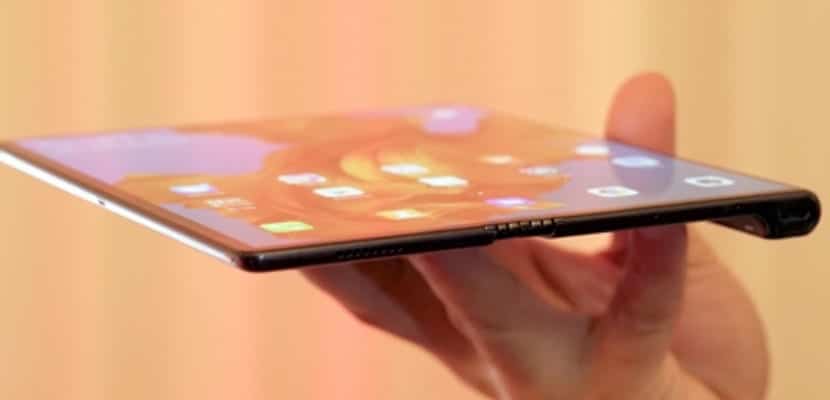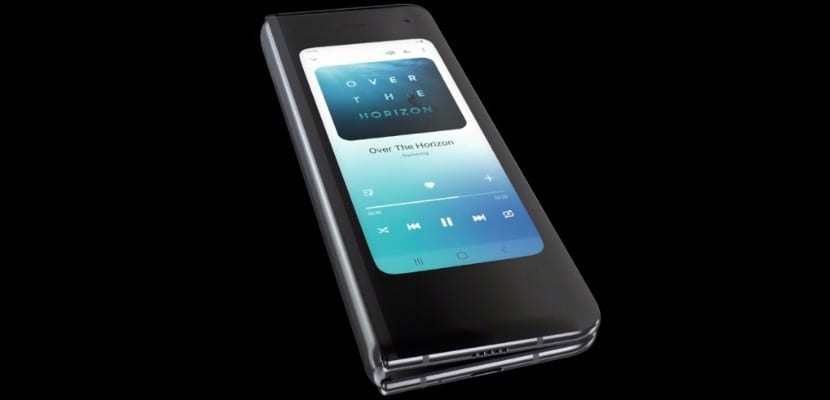
We are at a time when the smartphone market seems stuck, with customers holding out their devices for longer due to increasing price increases, and that they also do not find news interesting enough to justify a change to the new generation. In this time of "crisis" from which even Apple can not escape, it is normal for brands to look for ways to break the market.
And it seems that the new goose that lays the golden eggs has been found in folding mobile phones, or at least that is what they try to make us see brands like Samsung and Huawei, which have presented their first bets for this type of smartphone from two very different perspectives, but with the same objective: to convince the user that that's what you want and what you need. However, although I do not doubt that the future will be this type of smartphones, doubts about their current usefulness and designs that make waters in many aspects make one sure: they are not the present.
A concept that falls in love
The idea is fantastic and anyone would find many problems to resist it: the best of a smartphone and a tablet in a single device. ¿Who wouldn't want to have a 6-inch smartphone in their pocket that can be opened when needed and become a larger tablet?? While waiting for those holographic screens that we see in movies and series to become real, right now it seems that flexible screens are the solution to this new technological challenge.
Imagine carrying your iPad in your pocket, folded to the size of your iPhone, even if it's big like the XS Max. Or for lovers of smaller smartphones, carry an iPhone SE in your pocket that when you unfold it is like an iPad Mini. This is what many dream of and what we have seen in numerous renders or even videos for years. And this is what Samsung and Huawei have tried to get closer to.

Samsung Galaxy Fold, the rush is not good
The Korean brand was the first to present its flexible model, the Galaxy Fold, betting on a design that, although in a first phase, got the applause of the attendees, time has caused many to change their minds. Samsung has opted to include an internal screen of 7,3 "when it is open, and that when folded it remains inside, leaving out another independent screen, of 4.6".
The end result is a very large and very thick smartphone with only a 4,6 ”screen, and a small tablet of only 7,3”. The design is very reminiscent of the Nokia E90 Communicator, and no matter how many good memories that smartphone brings us and the classic sympathy that the technologies of the past awaken., a phone that claims to be the future of smartphones cannot remember a phone from more than 10 years ago. At 17mm thick, the Galaxy Fold is more than twice as thick as an iPhone XS Max at 7,7mm.
Huawei Mate X, better design but with many doubts
Huawei approaches folding smartphones in a completely opposite way, leaving the screen on the outside. In this way, it manages to do without a secondary screen and also achieves a much better finished design, with a much more modern terminal, attractive to the eye and thin. Its unfolded screen is larger than the Galaxy Fold, reaching up to 8 "when unfolded, and dividing into two screens (6,6" and 6,38 ") when folded. By leaving the screen out, it achieves a slimmer design, just 11mm folded, a little higher than the 7,7mm of the iPhone XS Max, but far from the 17mm of the Galaxy fold.

But this design, being undoubtedly much more refined than that of the Galaxy Fold, does not stop raising many doubts. A screen on the outside that occupies practically the entire terminal in front and behind? ¿How is this protected? How will the screen resist the passage of time and external aggressions? Here it should be noted that the screen is covered by a layer of plastic, since the glass cannot be bent, so it seems impossible that it does not end up scratched, even more so considering that there is no possible cover that can protect the device.
Square screen, a bad option
In what both models coincide is that when the screen is unfolded it is square, which makes sense if we want the design to be that of a normal (rectangular) smartphone when folded, but none if we think about practical utility of the screen when unfolding. When would we want our smartphone to have a larger screen? The quick answer would surely include the visualization of multimedia content and games in most cases. In both cases the square screen suspends.
With multimedia content that is usually in 16: 9, 18: 9 or even 21: 9 format, a square screen means that we will lose more than half of the useful surface when viewing it. In the case of the Huawei Mate X, which has a resolution of 2480 × 1148 on its front screen and 2480 × 2200 when deployed, by watching a video we would not gain anything by displaying the screen. Something similar would happen with games, most adapted for 4: 3 or panoramic screens, but in no case to square screens.

A promising future but still a lot to improve
There's no question that the Samsung Galaxy Fold and Huawei Mate X have made headlines in recent days, coffee shop conversations, and tech forums, and both companies shouldn't be taken away from risking being the ones. first to jump into this new technology. But both have done so without responding to the many problems that arise.. Their goal has been to get the headline, public applause, and immediate media admiration, but at no point have they thought about whether their product is suitable for the public.
I am not sure if the future will be folding mobile phones, although I would like it to be so. It may fall by the wayside, as modular mobiles did, or this may just be the first step towards what smartphones will be like in a few years. What is clear is that when we get our hands on that smartphone of the future, I'm sure it will be very different to what we are seeing these days.